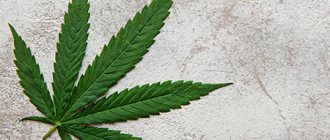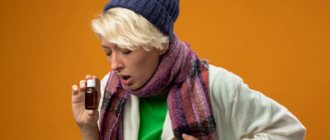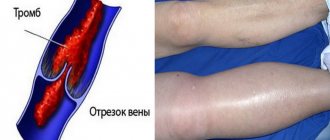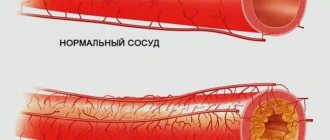Removing veins on the arms without surgery
Photos before and after treatment of varicose veins of the hands with foam sclerotherapy
TVC program with Dr. Khairbeik Aksam Ali
The veins of the arms become wide and tortuous with age. The older we are, the lower the skin tone of our hands and the smaller the subcutaneous fat layer on the back surface. This makes veins more visible, especially during work, training and in the hot season.
Protruding dilated veins make the hands unattractive.
This method can successfully treat varicose veins of the arms.
A sclerosing substance is injected in the form of foam into the lumen of the vein. As a result, it becomes sclerotic, then gradually shrinks, becomes clogged, completely sticks together and disappears.
- Treatment is carried out without hospitalization.
- Without anesthesia.
- Not expensive.
- We get the perfect cosmetic effect.
- The sclerotic vein disappears and does not appear again.
- You need to wear compression gloves for about two weeks.
- Sometimes there is an accumulation of several blood clots in the lumen of the sclerotic vein. These clots can be easily removed with a syringe.
- The final result will become noticeable in 3-4 weeks.
- Sometimes more than one sclerotherapy session may be needed.
External signs that drug addicts manage to hide
- Traces all over the body that remain from constant injections into the veins. These marks are especially common among drug addicts in the area of the elbows of the arms, the knees of the legs or thighs, the groin area or armpits. Such visible signs of intravenous drug use force drug-dependent people not to wear short sleeves or shorts, even in the most extreme heat.
- The pupils of the eyes are narrowed to the point of dots. People who constantly use drugs have eyes that react poorly to light; there is even a term they use for such a pupil - “sunken pupil.” Sometimes drugs can cause the opposite reaction, leaving the pupils permanently dilated.
- Red eyes. In most drug addicts who use cannabis drugs, capillaries in the whites of the eyeball burst and hemorrhages form, which give the eyes a red color.
These are not all the signs by which you can recognize a drug addict. In fact, there are many more of them. And professional drug addicts always have with them a set of items for taking drugs, because without this they simply cannot imagine their life and items that help hide their addiction. How do drug addicts hide these obvious signs?
Varicose veins of the arms in women
Factors that provoke the development of varicose veins in women:
- Taking hormonal drugs and oral contraceptives for a long time;
- The onset of menopause, during which an imbalance of the hormonal system occurs, affecting, among other things, the condition of blood vessels and the circulatory system as a whole;
- The presence of congenital diseases, which result in damage to the structure of the blood vessels of the circulatory system, the valves of the veins;
- Regular exercise in strength sports or heavy physical labor, which results in overload of the muscles of the arms and shoulder girdle as a whole.
In advanced stages of varicose veins of the hands, in addition to the aesthetic component of the unattractive appearance of the hands, the patient begins to be bothered by such phenomena as pain in the hands, fatigue and aches, numbness and loss of sensitivity.
At this stage, surgery or sclerotherapy is indicated as treatment.
The most modern and effective method of non-surgical treatment of varicose veins in women is foam sclerotherapy. In this procedure, a special substance is used as a sclerosant, which, when introduced into the lumen of the affected vessel, forms foam and more effectively stops blood flow and glues the walls of the vessel, in contrast to conventional sclerotherapy.
In addition, in our clinic this procedure is carried out under ultrasound control, which is a more accurate, effective, safe method that achieves the best treatment results.
Masking constricted pupils
The problem of narrow pupils is most often experienced by those drug addicts who use opium drugs. In order to give the pupils a normal appearance, they use a medicine that normally treats stomach diseases. The name of this drug is becarbon.
This medicine has a side effect - when you take it, your pupils dilate. It is this effect that adherents of heroin, opium from poppy straw and crocodile use. In order to dilate the pupils, pink tablets of the drug becarbon are ground into a fine powder and diluted with water. After which the drug solution is instilled into the eyes, a few drops at a time.
Therefore, packaging such a drug in the bag or pocket of a friend or relative should alert his loved ones. After all, this may mean that the person is a drug addict and uses strong opiate drugs. It must be said that the drug becarbon often dilates the pupils unevenly.
One of them turns out to be wider than the other. This is due to the fact that the dosage that goes into both eyes may be different, for example two drops versus three. You can also recognize a drug addict by such pupils.
But the worst thing is that this drug, used in this way and not for its intended purpose, has a very detrimental effect on human vision. Therefore, very soon the drug addict who regularly used it, the sharpness of the picture of the world drops greatly and a cloudy and unclear movie appears before his eyes.
There are other medications that can dilate the pupils in the same way as becarbonate. These include, in particular, atropine and drugs from its group.
The mother found cuts on her daughter's arms. What does it mean? Psychologist answers
“My daughter is 13 years old. There are no problems in school, and in general everyone praises the child. We have quite a good, trusting relationship,” Marina . – At the beginning of summer, I noticed that the child wears a long-sleeved shirt in the heat. At first she didn’t ask, I looked in the bathroom in the morning: she had cuts on her arms, not on the veins, but higher up, closer to the elbow. She got scared, called for a conversation, asked to show her hands - that’s right, short, seemingly deep cuts. It flashed: maybe she was cutting her veins... They talked for a long time, in the end the daughter admitted that she loves an older boy, they are hanging out in the same group, and he does not pay attention to her. She can’t explain why she cut her hands, but she says that she didn’t want to die, and in general, “Mom, leave me alone, don’t worry.” This hasn’t happened again, but I’m still very scared for the child. I won’t force her to see a psychologist, I’m afraid I’ll only make things worse. And then they’ll register it, there won’t be any problems. How can I help my daughter so as not to violate her personal boundaries and protect her from rash actions? I understand that everyone has their first love, but not everyone cuts their wrists because of it...”
Photo: krainaz.org
Liliya Rubtsova , chief freelance psychologist of Bobruisk and Bobruisk region, comments on the situation
– Teenagers aged 13-17 years can cut their skin or burn it with a cigarette. Self-harm is the deliberate act of causing physical harm to oneself. Let's figure out why this happens.
Myths and facts about self-harm
Myth: People who self-harm are trying to get attention.
Fact: as a rule, people do not advertise the fact of self-harm and, moreover, do not try to manipulate others. On the contrary, shame and fear prevent them from seeking help.
Myth: People who self-harm are dangerous.
Fact: Many people who self-harm suffer from depression, anxiety, or trauma, but this does not make them dangerous. Selfharm is a way to cope with pain.
Myth: self-harm is a manifestation of the desire to die.
Fact: People who practice selfharm generally do not want to die. This is not a suicide attempt, but a way to cope with stress. However, of course, in the long term these people are at risk, and that is why it is important to provide help in a timely manner.
Myth: Small wounds are not a big deal.
Fact: the depth of the wounds inflicted has nothing to do with the strength and intensity of the experience. Minor damage is also a significant cause for concern.
Types of self-harm:
- cuts and deep scratches
- burns
- blows (to oneself and objects)
- sticking things to the skin
- conscious slowdown of wound healing
- ingestion of toxic substances
- overeating and undereating
- hair pulling
- bites
Signs that loved ones should pay attention to
Self-harm is difficult to track, because physical wounds can be easily hidden by clothes, and internal anxiety can be hidden behind a smile. However, there are clear signs of concern:
- wounds and scars of unknown origin
- traces of blood on clothes
- sharp objects in personal belongings
- regular “accidents” attributed to clumsiness
- detachment and irritability
Why are they doing that?
It is a way to express what is difficult to put into words; make emotional pain physical; get rid of unbearable experiences and thoughts; regain a sense of control; escape from traumatic memories; punish yourself – for terrible behavior, feelings or thoughts, i.e. deliberately cause physical harm to yourself and in this way cope with negative emotions.
Physical pain is a vivid thing, so it helps immediately, attention is immediately refocused on it, and the person experiences relief. But self-harm brings only temporary relief and can turn into a vicious habit, because the problem is not solved, negative thoughts remain. Most likely, the person will continue to cut the skin of his hands or do something similar, falling into the “self-harm trap.”
From my own experience, I will say that teenagers with a normal, harmonious inner world, who are doing well, will not cut themselves. Usually the guys who resort to this method have monstrous dissatisfaction with themselves, they are unhappy, they hate themselves for some reason. Selfharm is a signal that your child is at risk.
How to react?
The most common reaction of parents is panic, and sometimes anger. This is fine. Most likely, you will want to say something like: “What is this?!” May I never see this again!” And yes, you won't see "it" anymore, simply because your son or daughter will hide the signs of self-harm more carefully. Attacks will only lead to the teenager withdrawing and stopping talking altogether.
It is important for the parent to be calm and try to establish an open dialogue. Gently ask: “I noticed the wounds and want to understand what you are going through now, what you are experiencing.” Try asking open-ended questions about how your child is feeling. Try to understand the reason for this behavior. Often teenagers cannot explain this. Then try to figure it out together.
It is worth identifying triggers (what triggers the desire to hurt yourself: a situation, a person, sensations, certain thoughts or emotions). What exactly are the feelings that provoke it – sadness, anger, shame, loneliness? Understanding the cause is the first step to recovery.
Give your child these questions and have them write down the answers so they can analyze them later:
- Why do I hurt myself? Why do I feel like I have to hurt myself? What made me cut, burn, etc.?
- Have I done this before? How did I cope then? Did I feel the same?
- What things have I done in the past to relieve my pain? Is there any alternative to self-harm that won't harm my body?
- How am I feeling now?
- How will I feel later after I inflict the wounds? How will I feel tomorrow morning?
- Can I avoid the problem that brought me to this question? Is there a better way that might help?
- Should I hurt myself?
Useful recommendations in pictures
When you collectively understand what emotion “includes” the desire to harm yourself, these pictures will come to help - with recommendations on how to overcome it:
Important!
If independent work does not bring results, then seek help from a psychologist. The worst thing parents can do in such a situation is to simply shut up.
Remember that your child’s self-harm does not happen for nothing. This is an external expression of internal pain, which may have underlying causes. And, I want to assure you that visiting a psychologist does not lead to registration.
Contour plastic
Contour plastic surgery will help restore lost volume during skeletonization of the hands. The filler will fill and even out wrinkles, folds, and dips.
When injecting fillers with hyaluronic acid into problem areas of the hands, it allows you to create the effect of smooth, soft and moisturized skin, and hide tendons and veins.
Radiesse and Ellanse fillers are also used to add volume. Radiesse, consisting of calcium hydroxyapatite, similar in composition to the human mineral, launches a powerful process for the production of its own collagen, making the skin dense and taut.
The main component of Ellans is polycaprolactone, a medical suture material that induces the ability of fibroblasts to produce collagen. And it is precisely the one that is actively formed in young people aged 18-20 years, making the skin soft, elastic, and velvety.
Concealing puncture marks
If there are many traces of intravenous injections on a person’s body, then for others this is the most obvious sign of drug addiction, which simply catches the eye. These traces can be seen by any loved one, friend or relative of a drug addict.
And if he compares it with other signs, for example, strange behavior, he will make a clear conclusion about the person’s drug addiction. Of course, when a drug addict begins to be asked questions about the nature of these traces, he has to come up with various, sometimes very ridiculous, options for their origin.
Versions may vary. From a squeezed pimple to scratches from a cat's claws. However, even a person who is far from medicine or drugs will be able to distinguish traces of injections from other skin lesions.
If you look closely at the marks on the skin, you will see the entrance hole of the needle in the form of a small red dot at the injection sites. Very often a small bruise will form around the injection site. For experienced drug addicts, injection points form entire “roads” because they follow each other.
When a drug addict injects many times in a row into the same vein, a “well” can form at that spot. Each new injection expands and deepens it, making it more distinct and noticeable.
If you take a closer look at the “roads” of a drug addict, you can see a certain pattern. This is a clear sign that the person is injecting drugs into a vein. After all, “roads” follow only along the lines of veins.
But stubborn in their desire to hide their drug addiction, people pass off even the most obvious “roads” as ordinary scratches, and explain the appearance of “wells” as burns. Everything depends only on the degree of development of the drug addict’s imagination.
Masking of injection marks occurs by regularly applying various ointments to the injection sites, which serve against the appearance of blood clots. CU such ointments include: troxevasin, hepatrombin and the like. Using these ointments, drug addicts get rid of bruises in a matter of days.
Another way to hide marks from injections is a method in which injections are made only in those areas of the body that are not visible to others. For example: groin area, legs, neck below and under the hair, back of the forearm or armpit.
With injections in the groin, the drug addict can afford to wear T-shirts and shorts in the hot summer, no different from other people. True, any drug addict is immediately betrayed by huge circles under the eyes and painful thinness.
Those drug addicts who do not inject drugs in any way, intramuscularly or intravenously, but only smoke narcotic mixtures or snort drugs, are not much different from other people. And recognizing them as drug addicts is quite difficult. It must be said that those drug addicts who are afraid for their loved ones or do not want anger on their part come to such drug use.
Masking dilated pupils
Dilated pupils of the eyes occur mainly in those drug addicts who use narcotic stimulants. They also use medications to make their eyes look normal. For example, a group of drugs such as miotics.
These include drugs such as: fosarbine, pilocarpine, carbacholine, aceclidine, physostigmine, phosphakol and other drugs that can narrow the eye pupil. Like the previous masking agent, these drugs greatly damage vision and even often cause cataracts. But those drug addicts who want to hide their addictions do not stop even at complete blindness.
Lipofilling and nanolipofilling
One of the most effective and innovative methods of hand rejuvenation is lipofilling. Hand rejuvenation using autologous fat instantly improves the appearance of the hands, giving them volume. Purified fat produces its own collagen and forms new vessels, which in the future will supply the skin with useful substances. As a result, your hands will look even younger.
Nanolipofilling is one of the areas of lipofilling, in the process of which a fat emulsion (smaller fat fraction) is used. It is injected pointwise, directly into the wrinkles themselves or into certain areas of the skin to rejuvenate, improve quality, density, and improve skin tone.
Symptoms of spider veins
The main symptom that patients with telangiectasia complain about is an aesthetic defect. Telangiectasias appear on the face, legs, back, and have different colors and shapes. If the spider veins are filled with venous blood, then they are blue, if they are filled with arterial blood, then they are red. They may change over time. For example, red telangiectasia can turn blue and vice versa - this is due to the flow of blood into them from venules (small blood vessels) when varicose veins begin.
The presence of telangiectasias may be accompanied by symptoms of the underlying disease that triggered their appearance. Most often these are symptoms of varicose veins :
- heaviness and swelling at the end of a working day;
- malaise and night cramps in the calf muscles;
- the presence of larger varicose veins;
- in some cases: trophic ulcers and hyperpigmentation in the lower leg area.
In other cases, patients associate the presence of telangiectasias with the use of oral contraceptives, childbirth, menopause, and the presence of other diseases.
In some diseases, spider veins appear in typical places, and an experienced specialist may suspect a particular disease based on their appearance and location. In some cases, the tendency to develop spider veins is a manifestation of connective tissue weakness. Then the patient, in addition to other symptoms, notes hypermobility of the joints, increased elasticity of the skin, a tendency to form bruises and aneurysms (protrusions on the walls of blood vessels).










